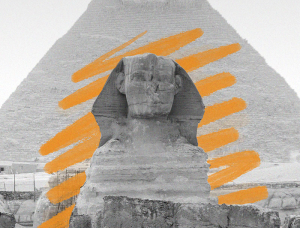Ancient bakers used bread stamps to prevent forgery.
In ancient Rome, most people didn’t have their own ovens. This included some bakers, which put them in a tricky spot since bread was strictly regulated. Government officials would carefully inspect the weight, size, and cost of the loaves, and nobody wanted to get punished for someone else’s substandard bread. So to distinguish their goods, bakers put their dough in the oven with a bronze brand on top, which would leave an indent on the finished product — not unlike a maker’s mark on ceramics. Some of these ancient loaves were uncovered at Pompeii, the markings perfectly preserved in the volcanic ash.
While bread stamps were in particularly wide use in ancient Rome, the Romans didn’t invent the practice. Clay bread stamps have been found in various regions of Europe dating to at least the Neolithic Period. Many stamps were decorative, particularly for religious rituals. Early pagans used stamped bread as offerings to gods or to ask for blessings. In some cases, decorative bread could stand in for a more expensive sacrifice, such as an animal.
One stamp from the Byzantine Empire was used to mark bread as kosher. Orthodox Christians also began stamping bread for the Eucharist (including Holy Communion) or for saints’ feast days. Today, bread stamps aren’t as common, but they’re still a key part of some traditional bread-baking, such as obi non in Uzbekistan. Stamped bread or wafers are also widely used for the Eucharist in Christianity, and home bakers occasionally use stamps for Instagram-worthy sourdough.







